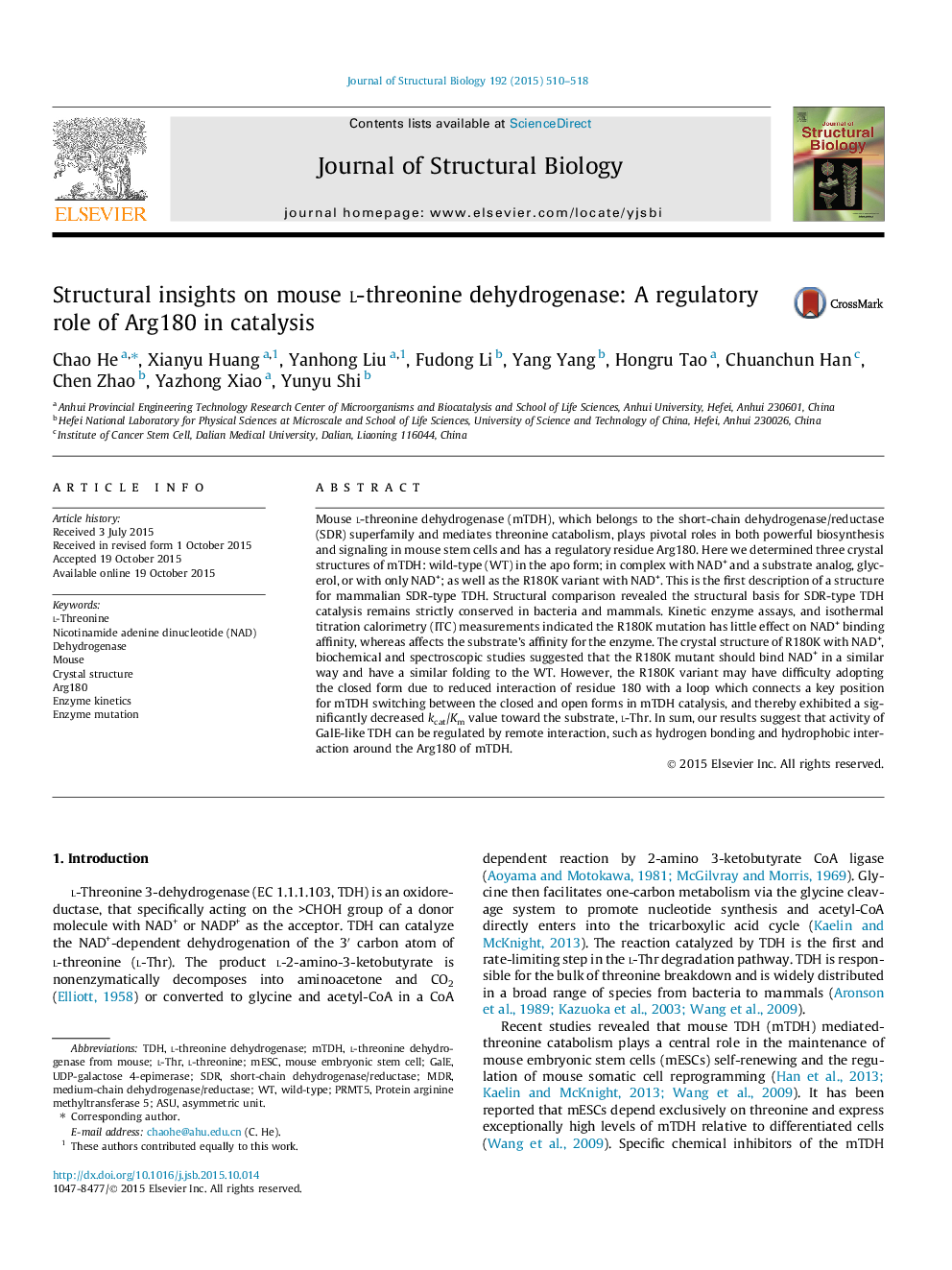| Article ID | Journal | Published Year | Pages | File Type |
|---|---|---|---|---|
| 5913680 | Journal of Structural Biology | 2015 | 9 Pages |
Abstract
Mouse l-threonine dehydrogenase (mTDH), which belongs to the short-chain dehydrogenase/reductase (SDR) superfamily and mediates threonine catabolism, plays pivotal roles in both powerful biosynthesis and signaling in mouse stem cells and has a regulatory residue Arg180. Here we determined three crystal structures of mTDH: wild-type (WT) in the apo form; in complex with NAD+ and a substrate analog, glycerol, or with only NAD+; as well as the R180K variant with NAD+. This is the first description of a structure for mammalian SDR-type TDH. Structural comparison revealed the structural basis for SDR-type TDH catalysis remains strictly conserved in bacteria and mammals. Kinetic enzyme assays, and isothermal titration calorimetry (ITC) measurements indicated the R180K mutation has little effect on NAD+ binding affinity, whereas affects the substrate's affinity for the enzyme. The crystal structure of R180K with NAD+, biochemical and spectroscopic studies suggested that the R180K mutant should bind NAD+ in a similar way and have a similar folding to the WT. However, the R180K variant may have difficulty adopting the closed form due to reduced interaction of residue 180 with a loop which connects a key position for mTDH switching between the closed and open forms in mTDH catalysis, and thereby exhibited a significantly decreased kcat/Km value toward the substrate, l-Thr. In sum, our results suggest that activity of GalE-like TDH can be regulated by remote interaction, such as hydrogen bonding and hydrophobic interaction around the Arg180 of mTDH.
Keywords
Nicotinamide adenine dinucleotide (NAD)medium-chain dehydrogenase/reductasel-threonine dehydrogenaseUDP-galactose 4-epimerasePRMT5mESCMTDHMDRSDRASUl-threonineGalEtdhShort-chain dehydrogenase/reductaseDehydrogenaseCrystal structureMouse embryonic stem cellEnzyme kineticsMousewild-typeasymmetric unitProtein arginine methyltransferase 5
Related Topics
Life Sciences
Biochemistry, Genetics and Molecular Biology
Molecular Biology
Authors
Chao He, Xianyu Huang, Yanhong Liu, Fudong Li, Yang Yang, Hongru Tao, Chuanchun Han, Chen Zhao, Yazhong Xiao, Yunyu Shi,
